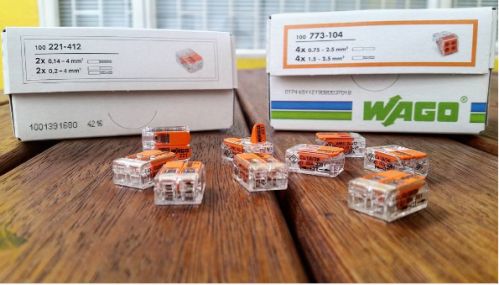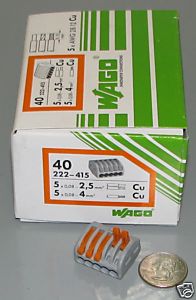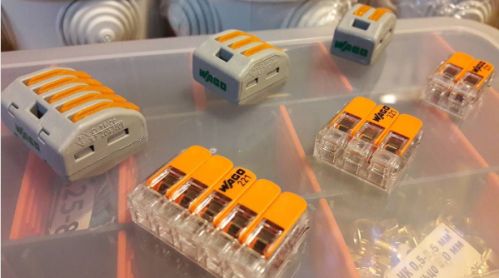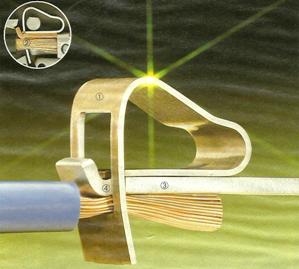Categories: Featured Articles » Electrician at home
Number of views: 142056
Comments on the article: 55
How WAGO terminal blocks are arranged
This article is a continuation of the theme started by Alexander Molokov. "Wago terminal blocks in home wiring". In European countries terminal blocks Wago are the most popular way to connect wires. We still treat them with very great suspicion, although everyone who is professionally involved in the installation of household electrical wiring knows about them. Terminals, connectors, blocks "Vaga", "Vagi" is already firmly included in the dictionary of a modern electrician.
In this article, let's understand how the terminal blocks are arranged. Wago. We will deal with the example of the most popular and universal series - WAGO 222. These terminal blocks Pare applied for connection and branching of copper single and multicore conductors. WAGO 222 terminal blocks can be used both for connecting lighting equipment and for installation in junction boxes.

The terminal blocks use a special flat spring clip CAGE CLAMP.
In the picture: 1 - CAGE CLAMP clamp made of CrNi-spring steel creates a high, programmed clamping force, which is automatically adjusted to compliance with a section of the conductor and does not depend on the thoroughness of the maintenance staff. 2 - CAGE CLAMP presses the conductor superficially without damaging it. 3 - Carrier rail made of electrolyte copper with a soft, tinned surface, with gas-tight enveloping of the contact surface of the conductor. 4 - The concentration of clamping force on the contact surface provides high contact pressure.
Materials used to make VAGO terminal blocks
 VAGO uses mainly insulating material for live parts polyamide (PA). Polyamide 6.6 is a corrosion-neutral, highly flammable material with self-extinguishing properties. The upper limit of short-term temperature load is 170 ° C for type 1 and 200 ° C for type 2, the lower limit of temperature of functional ability is minus 35 ° C.
VAGO uses mainly insulating material for live parts polyamide (PA). Polyamide 6.6 is a corrosion-neutral, highly flammable material with self-extinguishing properties. The upper limit of short-term temperature load is 170 ° C for type 1 and 200 ° C for type 2, the lower limit of temperature of functional ability is minus 35 ° C.
For the manufacture of current-carrying elements in the VAGO terminal blocks with a CAGE CLAMP clamp, spring solid electrolyte copper. The tin-lead coating, consisting of 60% tin and 40% lead, which is the standard coating of current-carrying elements in VAGO products, guarantees long-term corrosion protection.
Under the influence of high specific surface pressure at the contact point in the CAGE CLAMP clamp, the convex surface of the conductor is laid in a soft tin-lead layer in a precisely defined contact zone. As a result, reliable protection of the contact area from corrosion is provided.

The material used for the clamping spring in the VAGO terminal blocks is high-quality, carefully tested austenitic chrome nickel steels with high tensile strength. The exploitation of these materials for many decades has not revealed a single case of contact corrosion between chromium-nickel spring steel and other contact materials used on VAGO, including with connected copper conductors.
Building Terminal Blocks WAGO 222 allow reliably connecting one and multicore copper or single-core aluminum conductors in any combination without using a tool:
What is the advantage of WAGO terminal blocks over others ways of connecting wires and cables?
-
Ease of use.
-
Reduced time for wiring (this is especially important for large volumes of work)
-
Each conductor has a separate terminal location.
-
The quality of the connection does not depend on the accuracy of the electrician.
-
When connecting wires using terminal blocksWago conductors are not damaged.
-
Reliable protection against accidental contact with live parts of the connection.
-
Guaranteed contact reliability, eliminating short circuit and heating at the connection point.
-
Safety and order in the junction box.
In preparing the article, the catalogs of the company were used. Wago.
See also at e.imadeself.com
:

